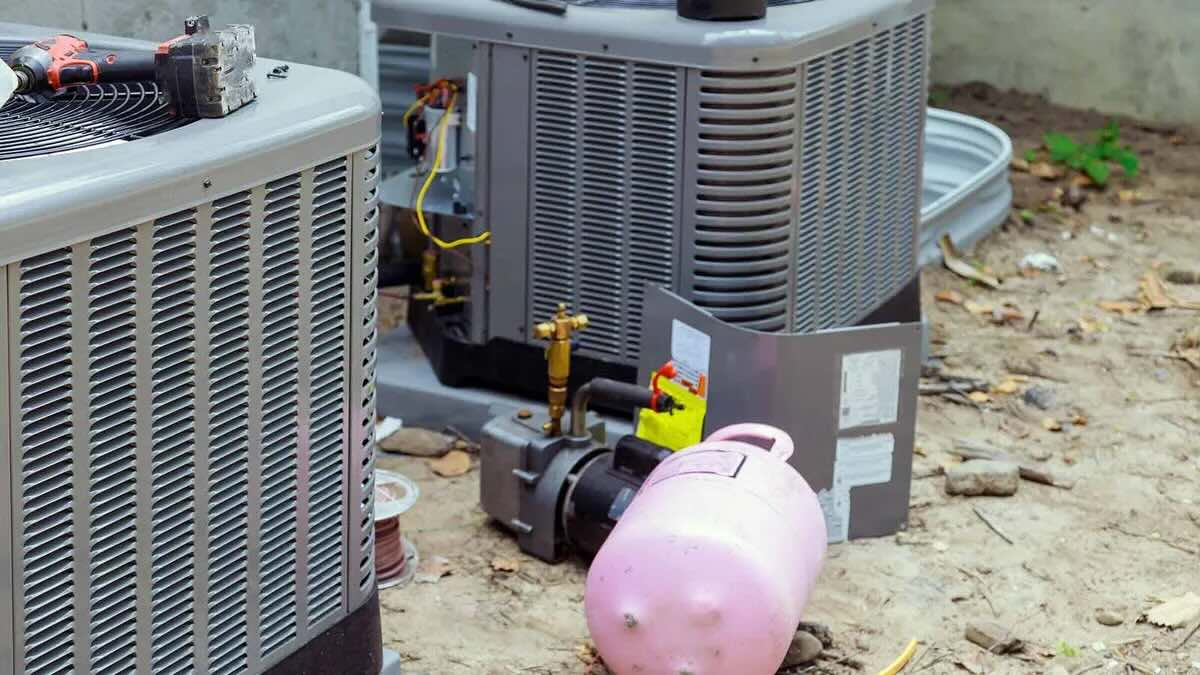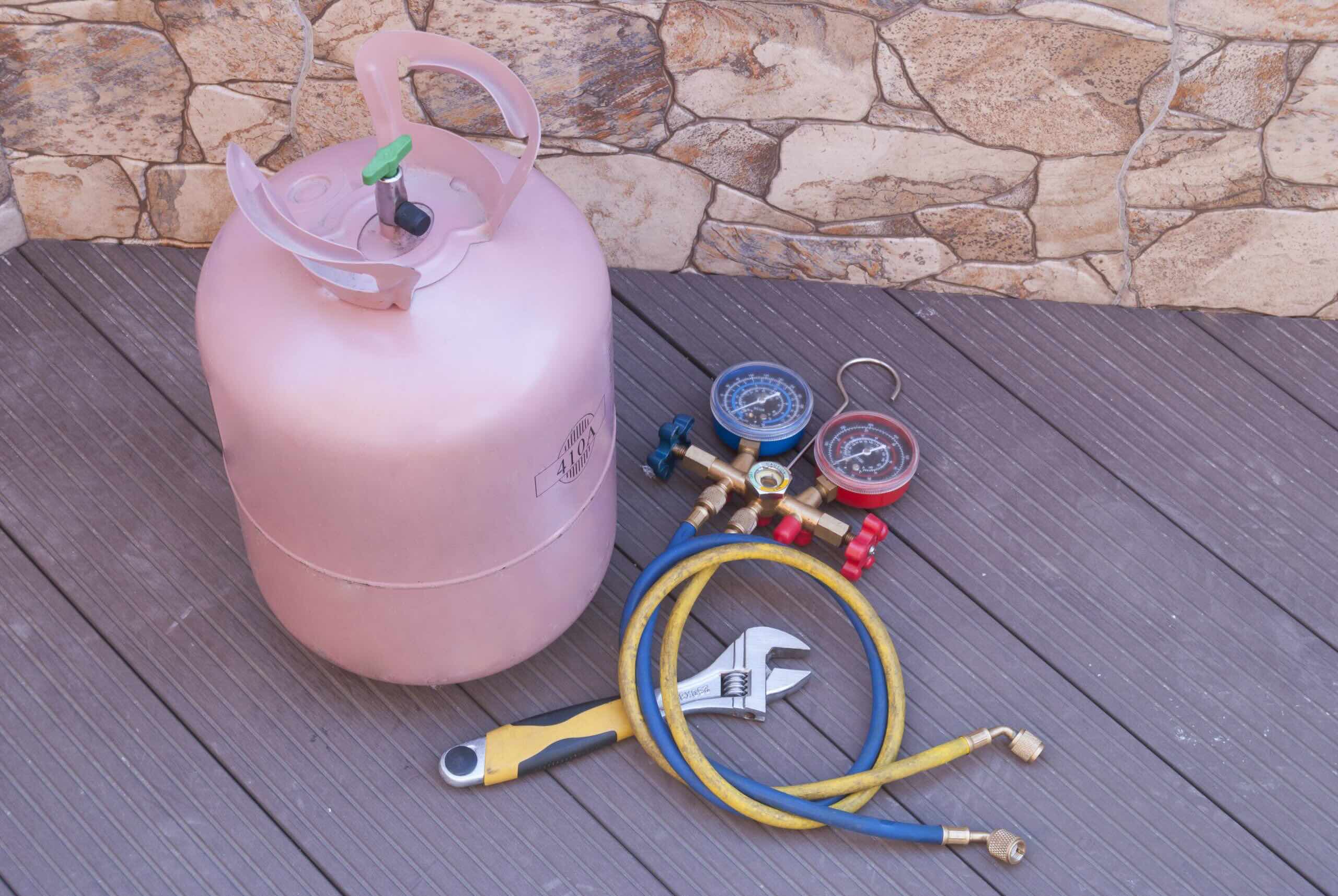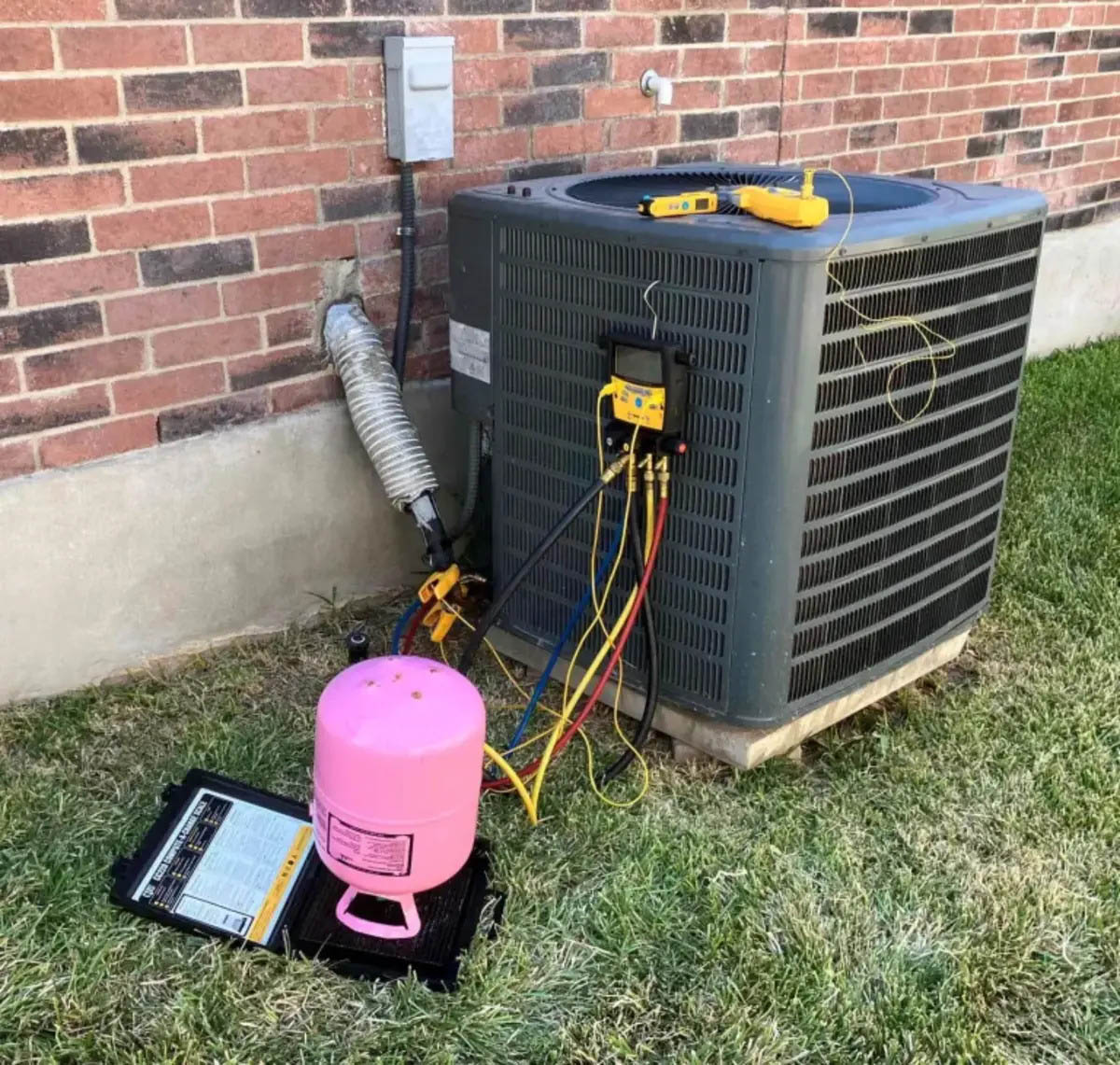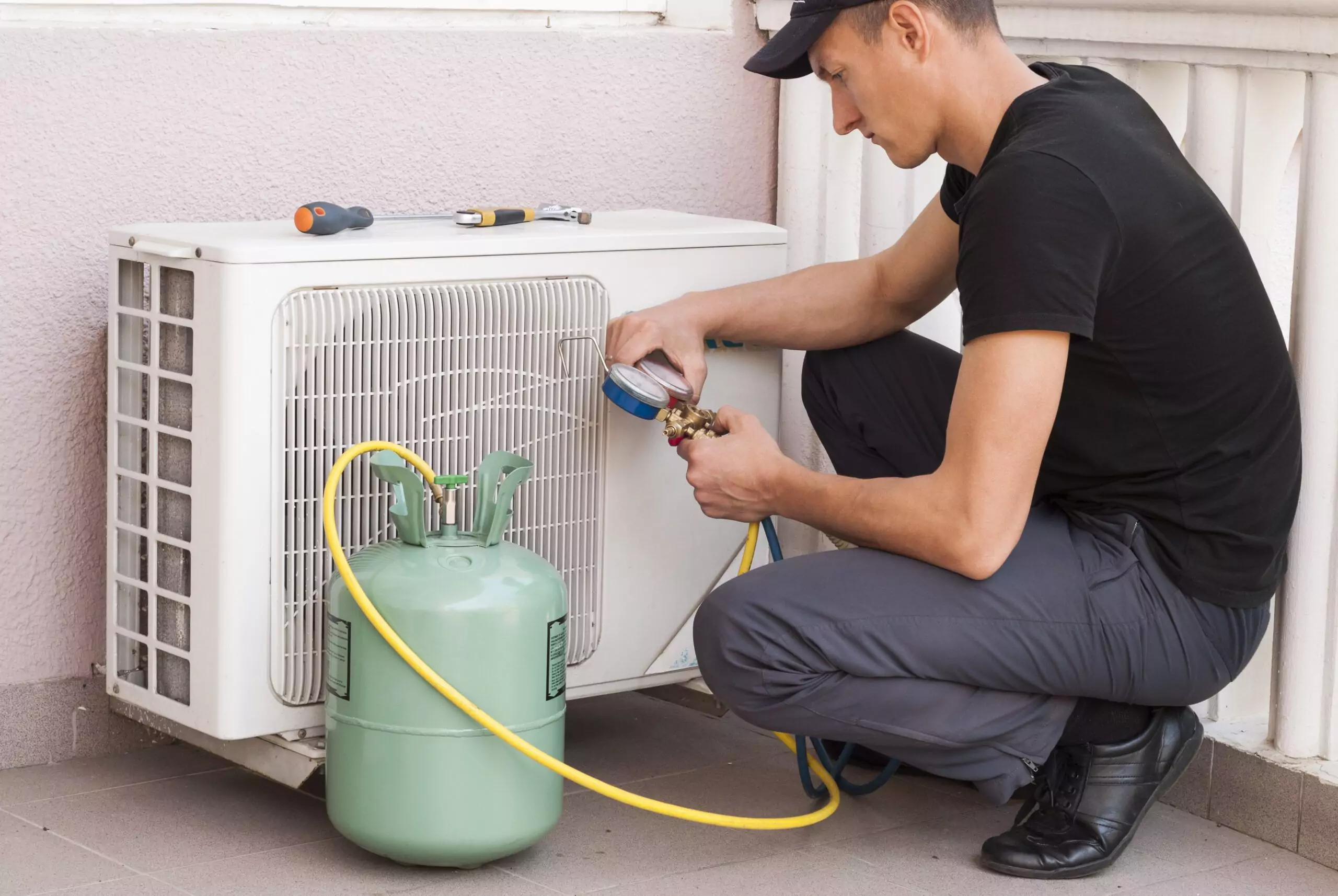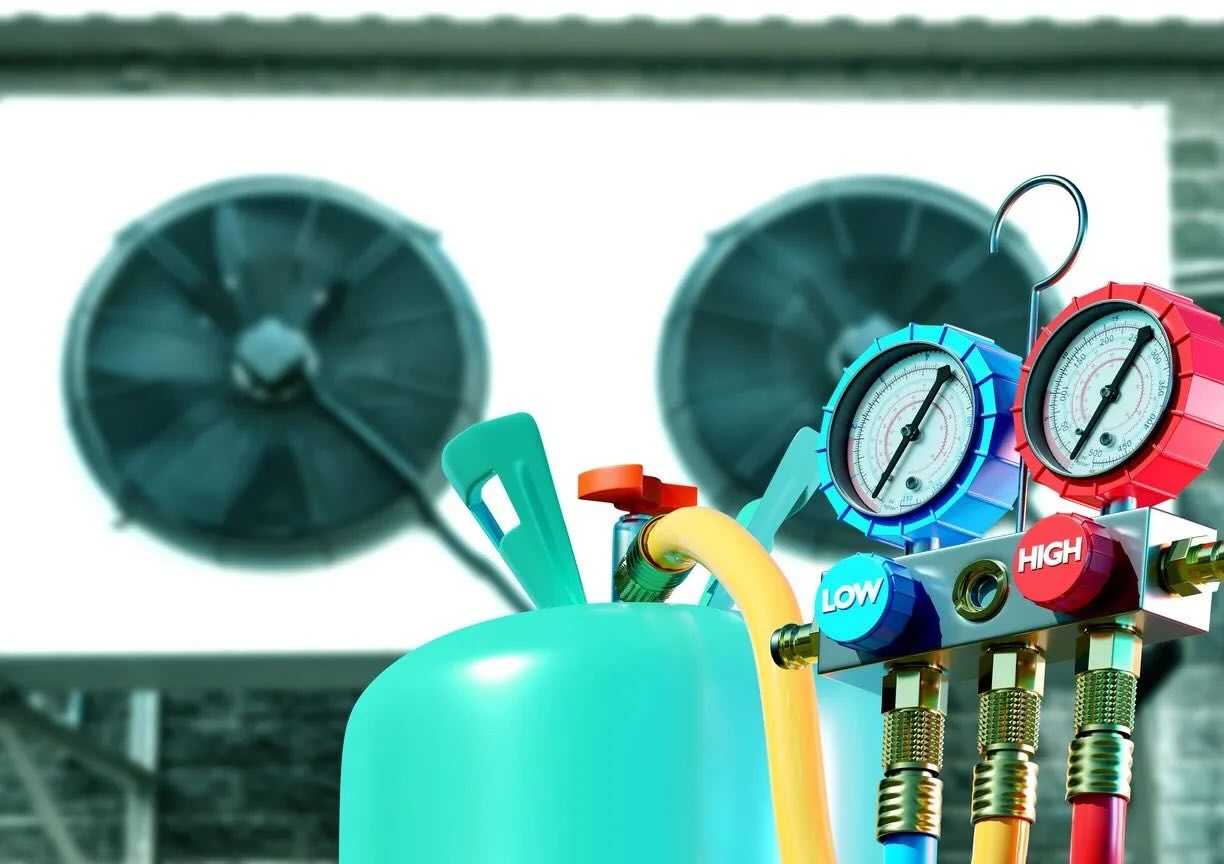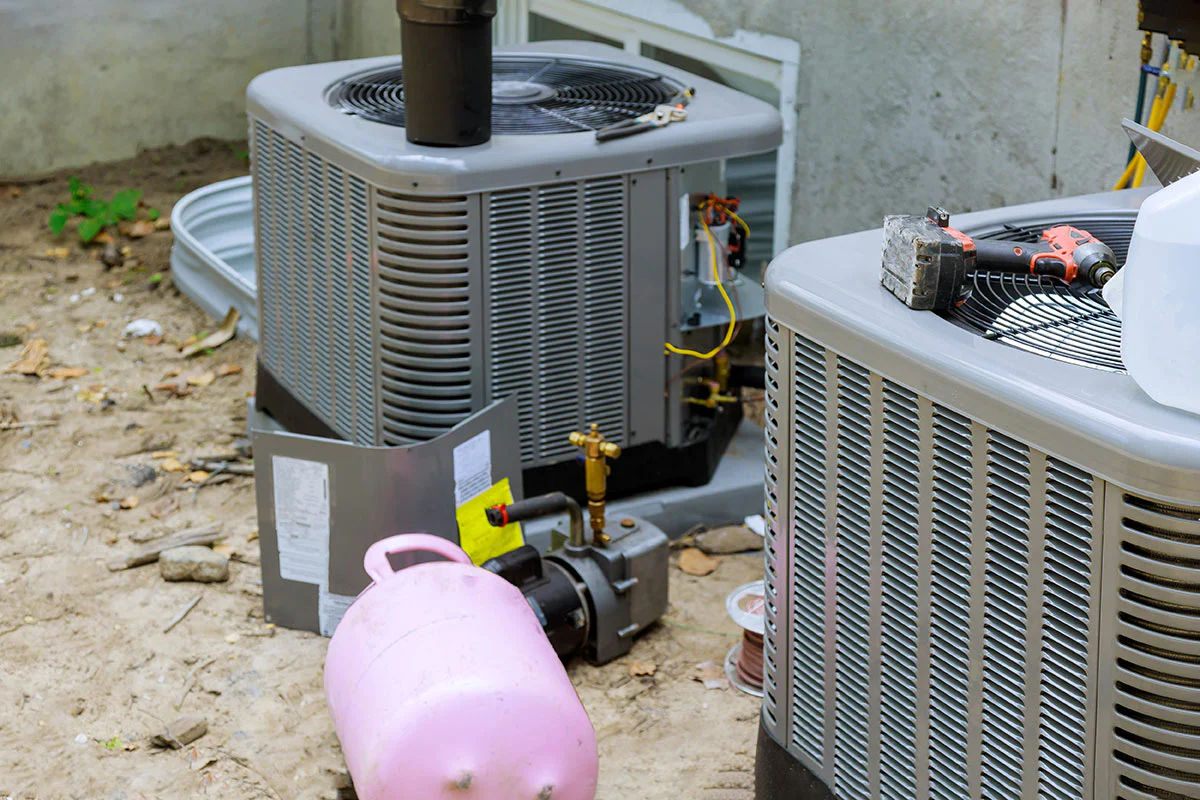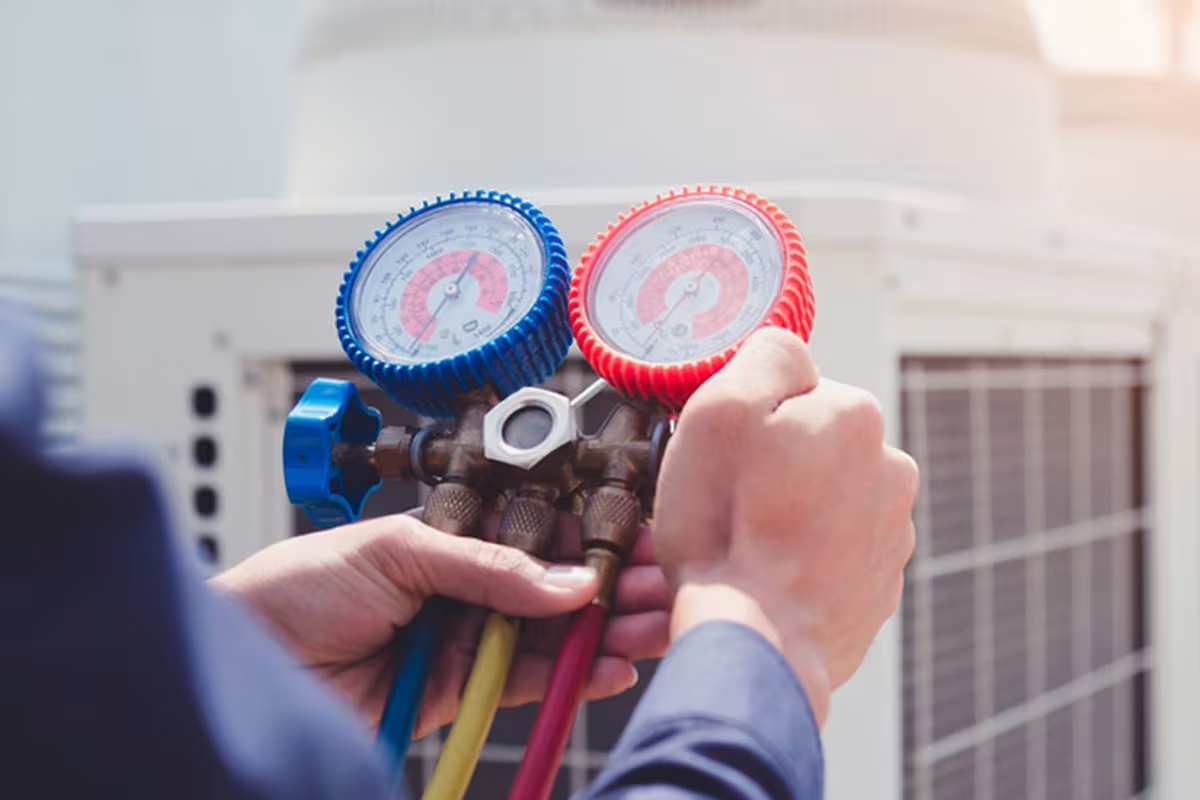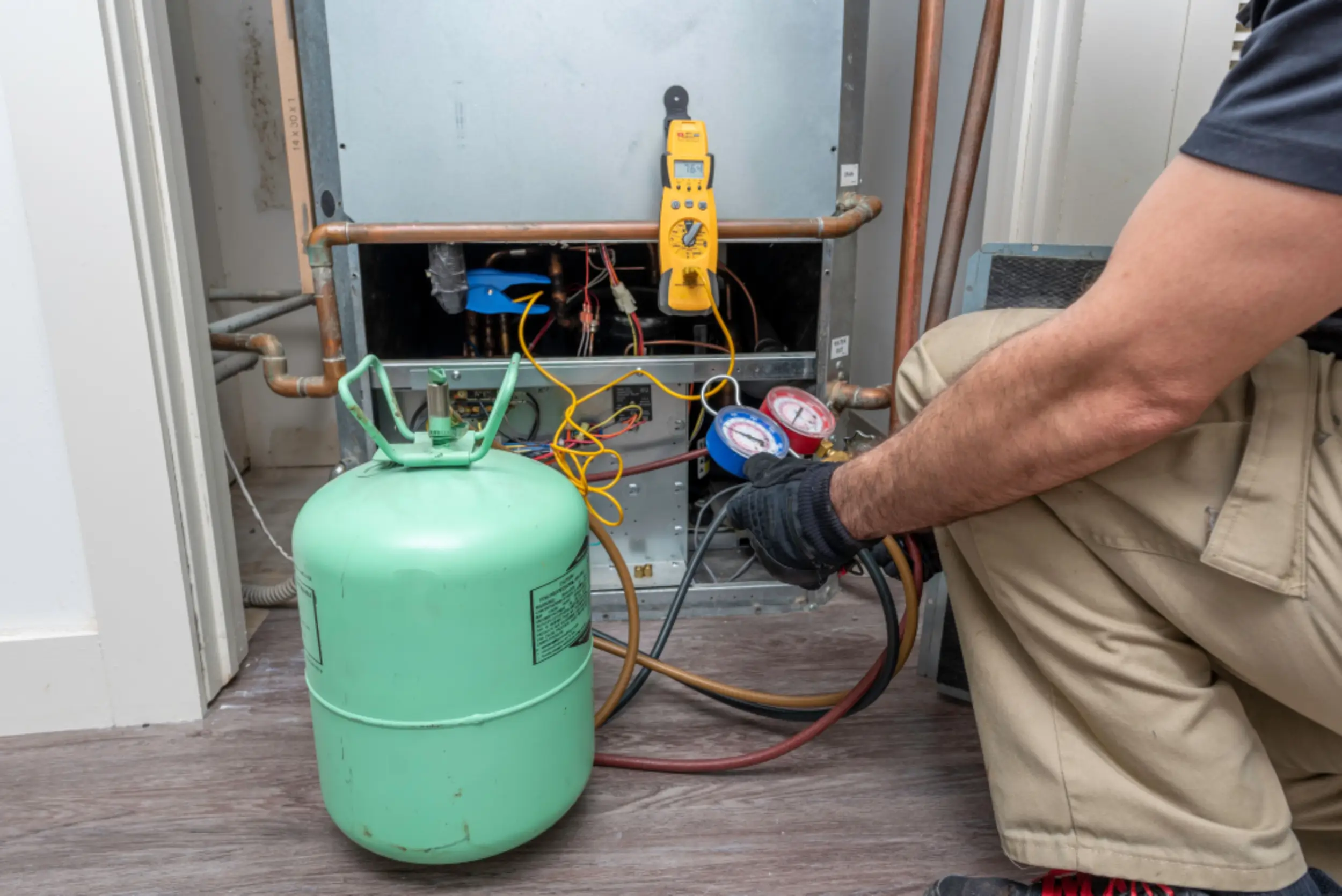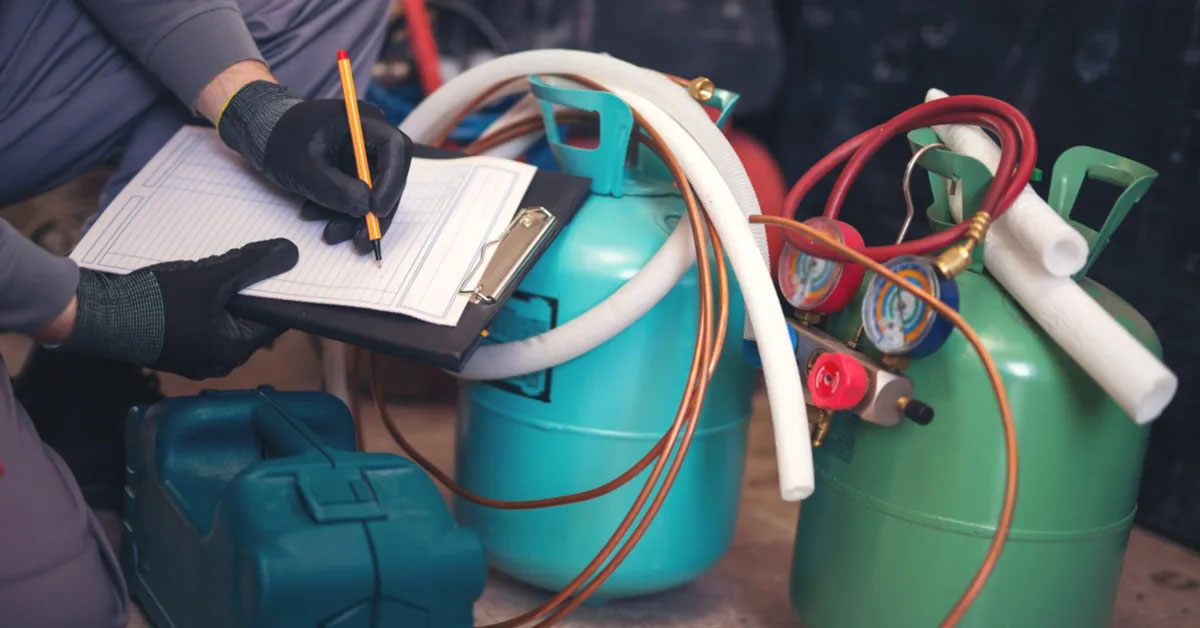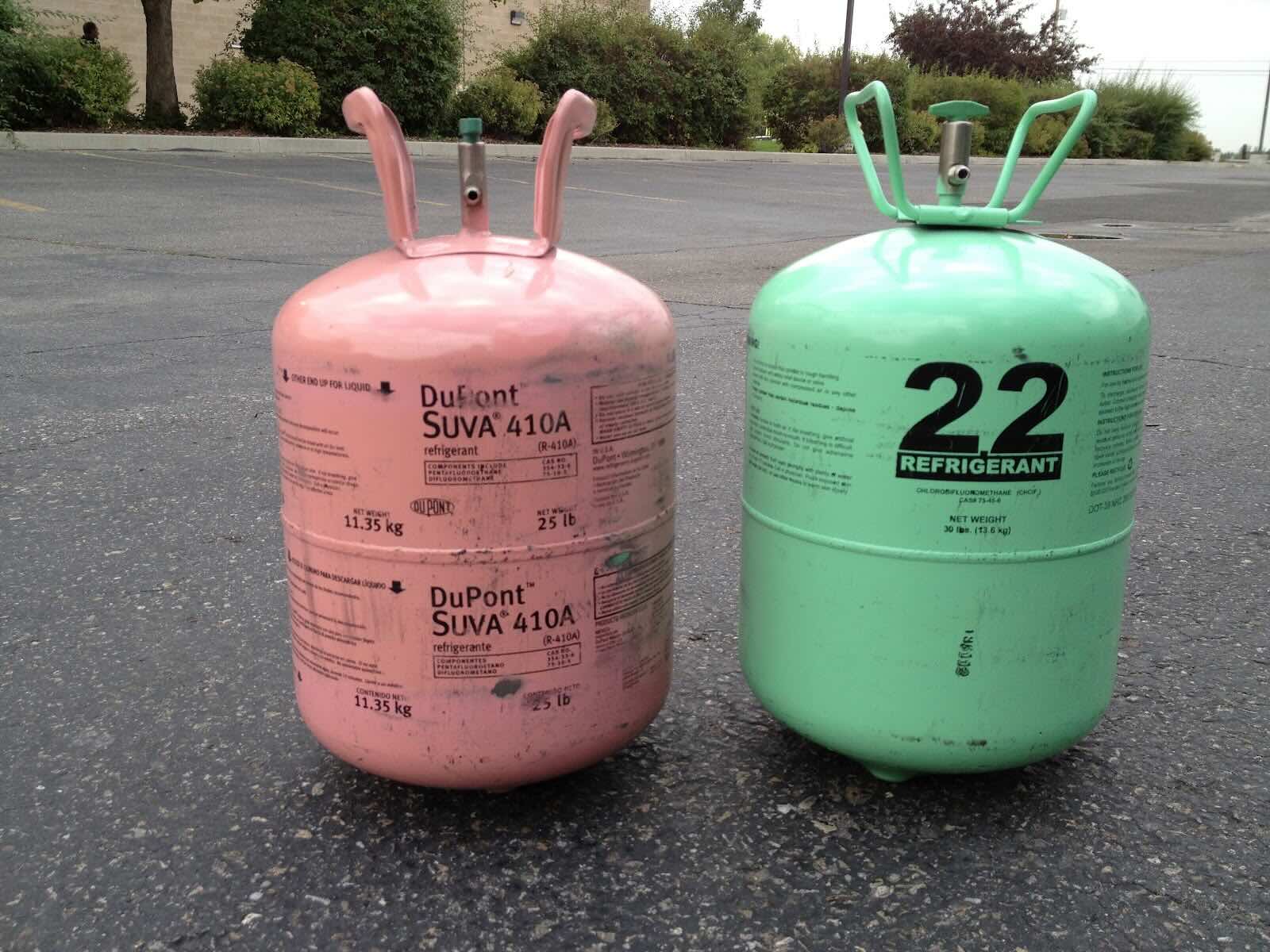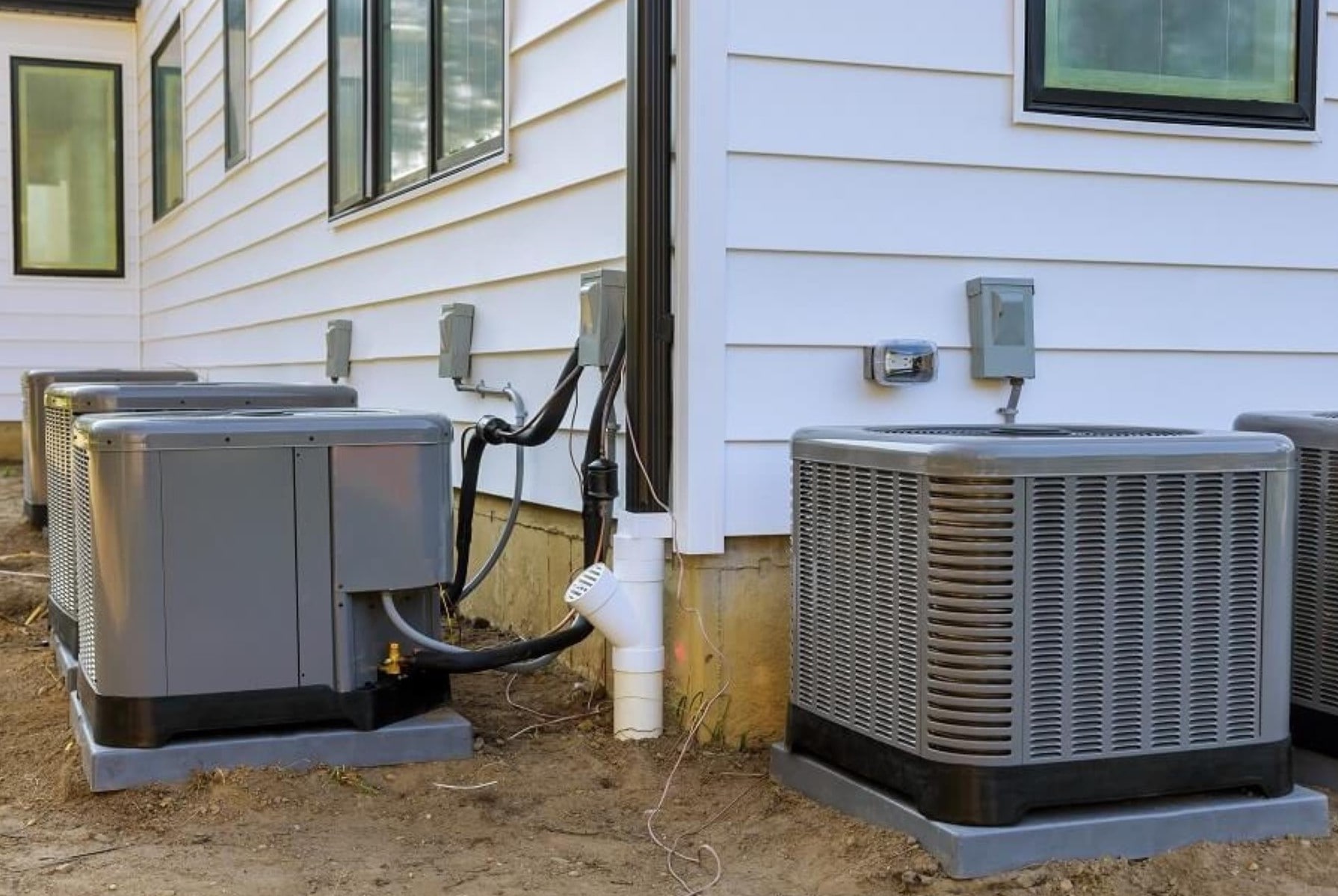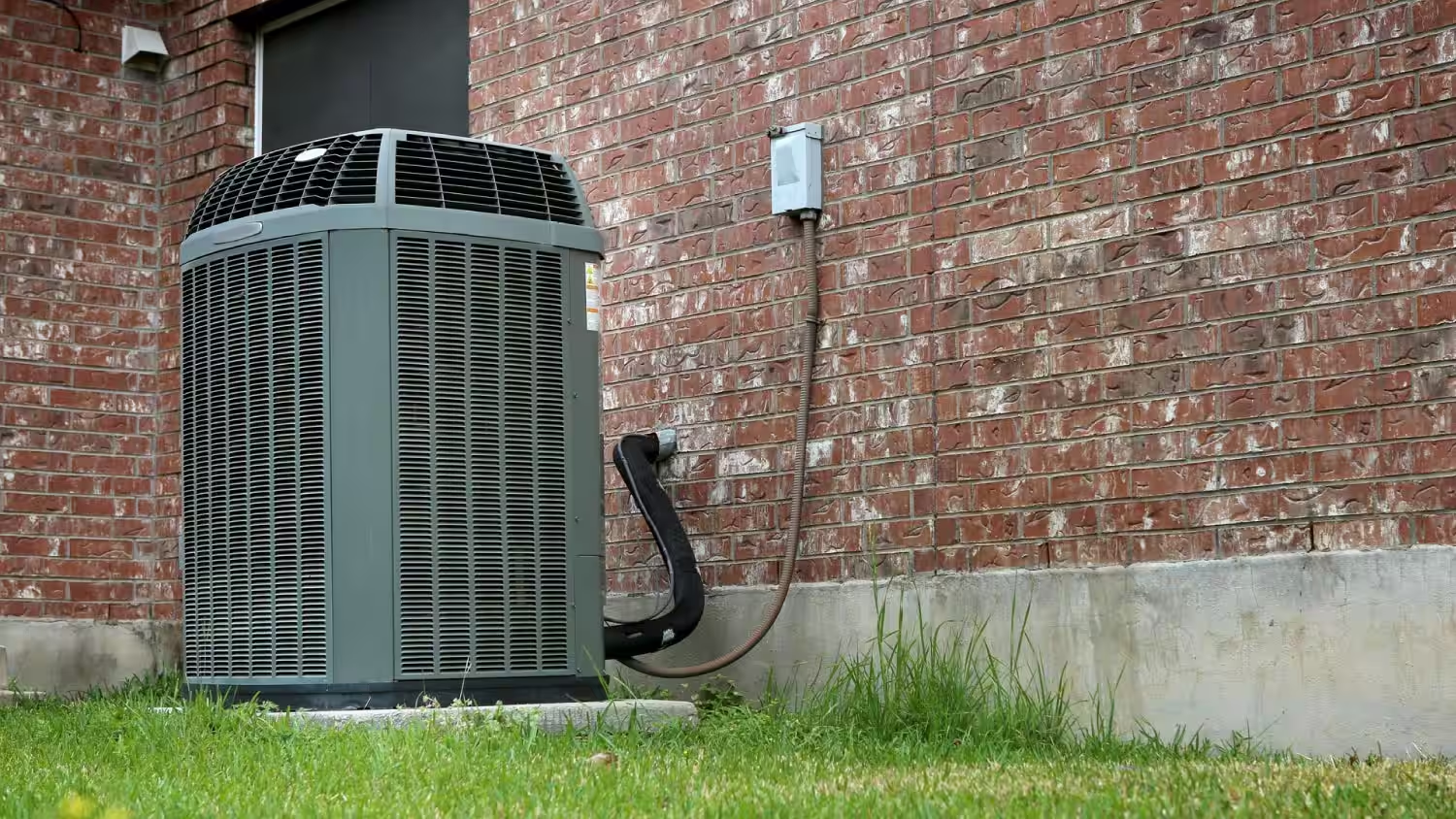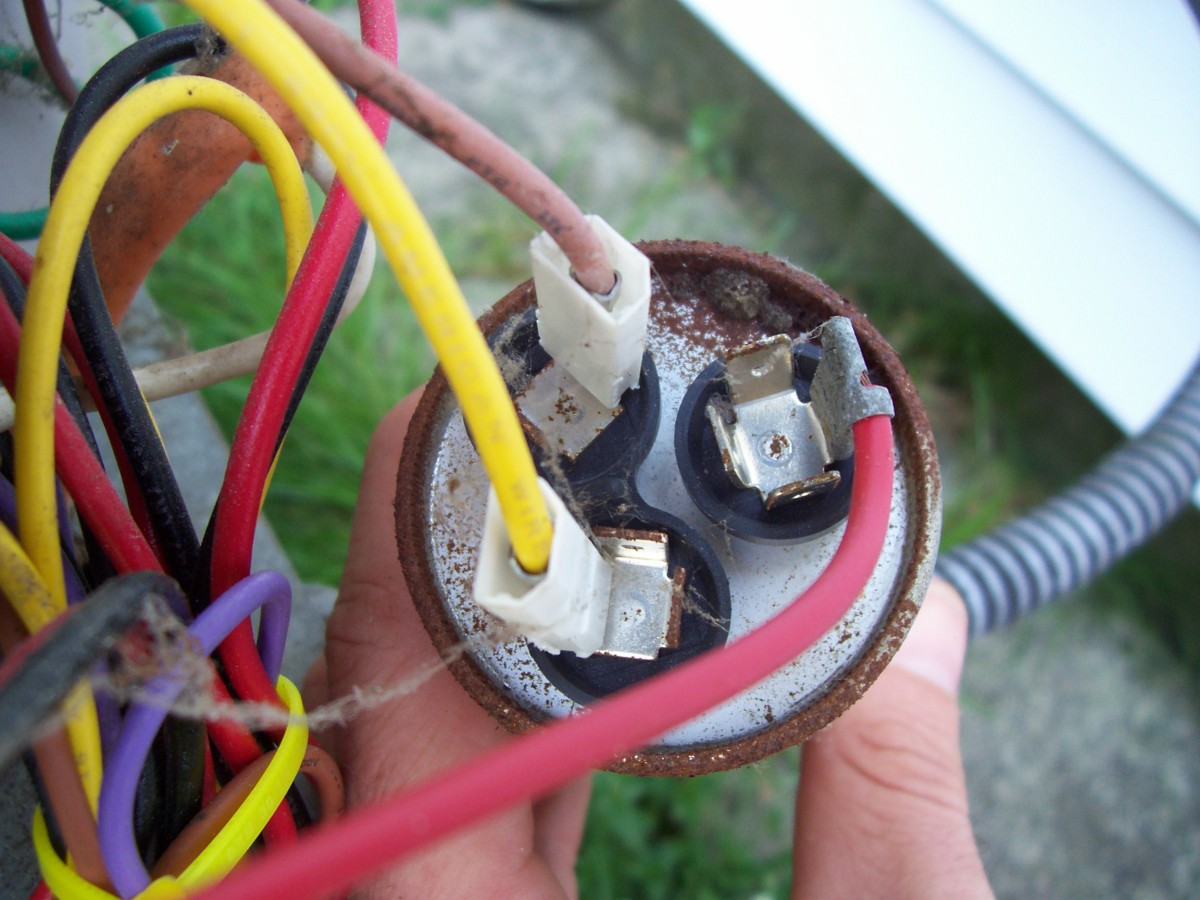Home>Home Maintenance>How To Check The Freon In A Home Air Conditioner
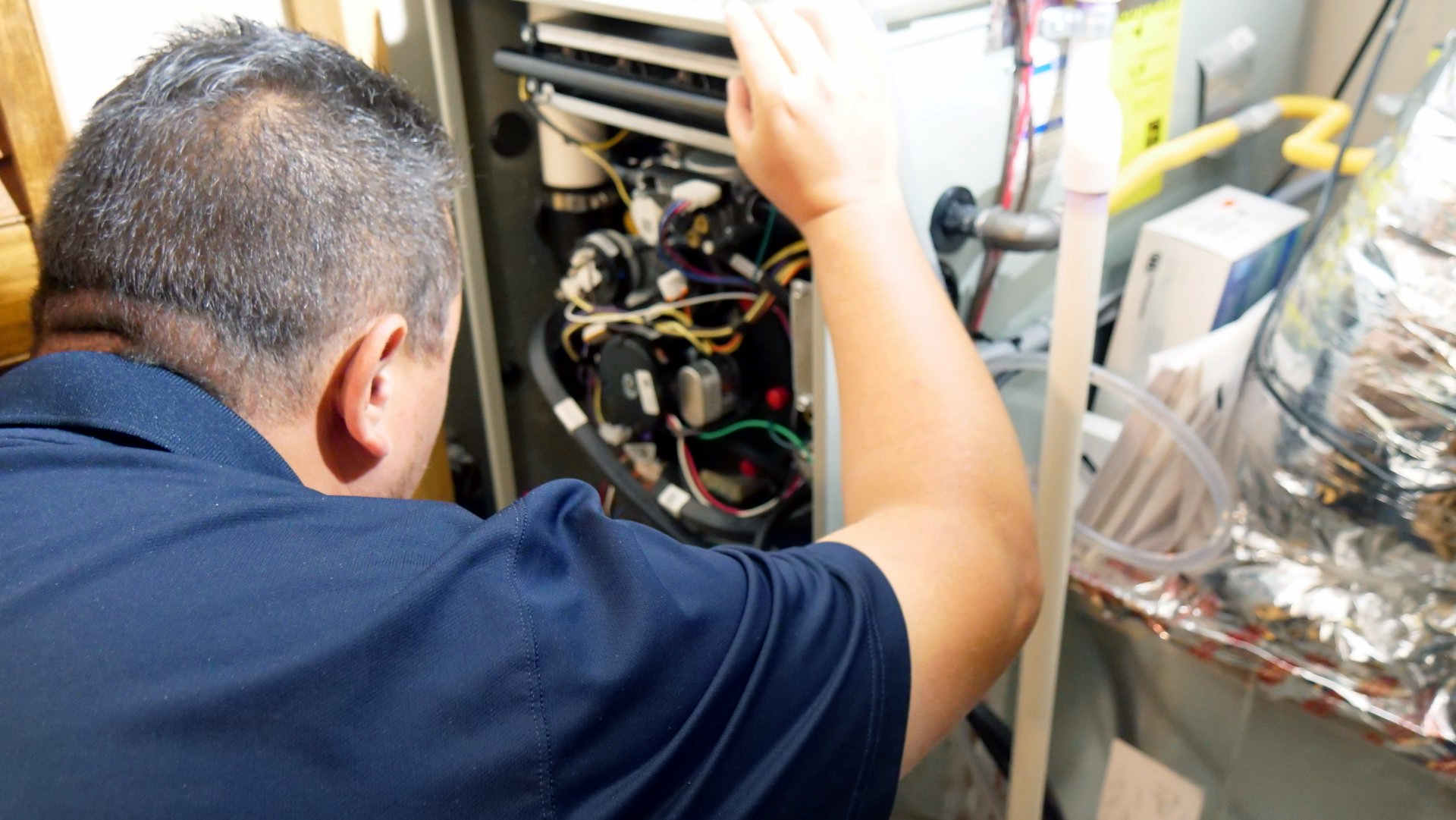

Home Maintenance
How To Check The Freon In A Home Air Conditioner
Modified: September 1, 2024
Learn how to check the freon levels in your home air conditioner for efficient cooling and maintenance. Expert tips for optimizing home air conditioner performance.
(Many of the links in this article redirect to a specific reviewed product. Your purchase of these products through affiliate links helps to generate commission for Storables.com, at no extra cost. Learn more)
Introduction
Welcome to our comprehensive guide on how to check the Freon levels in a home air conditioner. Proper maintenance of your air conditioning unit is essential to ensure it operates efficiently, keeps your home comfortable, and prolongs its lifespan. Freon, also known as refrigerant, plays a crucial role in the cooling process of your air conditioner. Therefore, it is important to regularly check the Freon levels to ensure optimal performance.
In this article, we will walk you through the process of checking the Freon levels in your home air conditioner, step by step. We will also discuss the signs that indicate the need to check the Freon levels, as well as safety precautions and alternative methods for checking the levels. Additionally, we will troubleshoot common Freon-related issues that you may encounter.
So, if you’re ready to dive into the world of Freon and learn how to keep your air conditioner running smoothly, let’s get started!
Key Takeaways:
- Regularly checking and maintaining the correct Freon levels in your home air conditioner is crucial for efficient cooling, lower energy bills, and preventing costly repairs.
- Signs like warm air, longer cooling cycles, and hissing noises indicate the need to check Freon levels. Safety precautions and professional help are essential for a smooth inspection process.
Read more: How To Check Air Conditioner In Car
Understanding Freon and its Importance in an Air Conditioner
Before we delve into the process of checking Freon levels, it’s essential to understand what Freon is and why it is crucial in an air conditioner. Freon is a type of refrigerant that circulates through the air conditioning system, absorbing heat from the indoor air and releasing it outside. It undergoes a continuous cycle of evaporation and condensation to cool the air.
The primary role of Freon in the air conditioning system is to facilitate heat transfer. When the air conditioner is turned on, the compressor compresses the gaseous Freon, raising its temperature and pressure. This heated gas then flows to the condenser unit outside, where it releases heat and transforms into a high-pressure liquid.
The liquid Freon then travels to the expansion valve, where its pressure is reduced. This causes it to evaporate into a low-pressure gas, absorbing heat from the indoor air in the process. The cool air is then circulated into the room, providing a comfortable temperature.
As the Freon absorbs heat from the indoor air, it gradually decreases in volume and efficiency. Therefore, it is essential to ensure that the air conditioner has an adequate amount of Freon to maintain its cooling capacity and energy efficiency.
Without sufficient Freon, your air conditioner may not be able to cool your home effectively. This can result in increased energy consumption, higher utility bills, and reduced comfort. Moreover, low Freon levels can cause the air conditioner to work harder, leading to excessive wear and tear and potentially damaging the compressor.
Regularly checking and maintaining the correct Freon levels in your home air conditioner can help prevent these issues, prolong the life of your unit, and optimize its cooling performance.
Signs that Indicate the Need to Check Freon Levels
Inspecting and monitoring the Freon levels in your home air conditioner is essential for keeping it running smoothly and efficiently. But how do you know when it’s time to check the Freon levels? Here are some common signs that indicate the need for a Freon level inspection:
- Lack of Cooling: If your air conditioner is blowing warm or mildly cool air instead of cold air, it may be an indication of low Freon levels. Inadequate Freon can hinder the cooling process, resulting in reduced cooling capacity.
- Longer Cooling Cycles: Noticeably longer and extended running periods of your air conditioner can suggest a potential Freon issue. When the Freon levels are low, the air conditioner has to work harder and for longer durations to achieve the desired temperature, leading to longer cooling cycles.
- Frozen Evaporator Coils: Low Freon levels can cause the evaporator coils to freeze up. If you notice ice buildup on the coils or reduced airflow, it’s a sign that the Freon levels need to be checked. Ignoring this issue can damage the compressor and other components of the air conditioning system.
- Hissing or Bubbling Noises: Unusual hissing or bubbling noises coming from the indoor or outdoor unit of your air conditioner may indicate a Freon leak. Freon leaks can occur over time due to wear and tear or damage to the refrigerant lines. Checking the Freon levels is crucial to identify and fix any leaks.
- Inconsistent Cooling: If some rooms in your home feel cooler than others or if there are significant temperature differences between different areas, it may indicate improper Freon levels. Inconsistent cooling can be a result of imbalanced distribution of Freon throughout the system.
It’s important to note that these signs can also be indicative of other issues with your air conditioning system. However, they serve as red flags to prompt a thorough inspection of the Freon levels. If you notice any of these signs, it’s recommended to check the Freon levels or seek professional assistance to ensure proper functioning of your air conditioner.
Safety Precautions before Checking Freon
Prior to checking the Freon levels in your home air conditioner, it is crucial to follow a few safety precautions to protect yourself and ensure a smooth and safe inspection process. Here are some important safety measures to keep in mind:
- Turn Off the Power: Before you begin any work on your air conditioning unit, make sure to turn off the power supply to avoid the risk of electrical shock. Locate the circuit breaker or disconnect switch dedicated to the air conditioner and switch it off.
- Wear Protective Gear: Freon is a refrigerant known for its potential hazards. It is important to wear the appropriate protective gear to minimize exposure. This includes safety goggles, gloves, and a mask or respirator to prevent inhalation of Freon fumes.
- Ensure Adequate Ventilation: Freon can displace oxygen, leading to suffocation in enclosed spaces. Make sure that the area where you are working is well-ventilated, either by opening windows or using fans to circulate fresh air.
- Avoid Direct Contact: Freon can cause frostbite or skin irritation upon direct contact. It is advisable to avoid touching any visible refrigerant or refrigerant lines during the inspection process.
- Work with a Trained Professional: If you are unfamiliar with HVAC systems or unsure about the process of checking Freon levels, it is best to seek assistance from a qualified HVAC technician. They have the knowledge and expertise to ensure safe and accurate inspections.
Remember, the safety of yourself and others should always be a top priority when working with air conditioning units and refrigerants. By adhering to these safety precautions, you can minimize the risks associated with checking the Freon levels and ensure a safe working environment in your home.
Tools and Materials Required for Checking Freon
When it comes to checking the Freon levels in your home air conditioner, there are a few essential tools and materials that you will need to have on hand. These items will help you perform an accurate and efficient inspection. Here are the tools and materials required:
- Pressure Gauge: A pressure gauge is an essential tool for checking the Freon levels in your air conditioner. It measures the pressure of the refrigerant in the system, allowing you to determine whether the levels are within the recommended range.
- Thermometer: A thermometer is used to measure the temperature of the air coming out of the air conditioner vents. It helps you assess whether the cooling output is sufficient and whether the Freon levels may be affecting the cooling capacity.
- Safety Gloves and Goggles: Safety gloves and goggles are necessary to protect your hands and eyes during the Freon level inspection. They provide an additional layer of safety and prevent any potential accidents or injuries.
- Flashlight: A flashlight is handy for illuminating the areas around the air conditioner unit, especially if it is located in a dimly lit space. It allows you to see the components clearly and identify any potential issues that may affect the Freon levels.
- Refrigerant: Sometimes, checking the Freon levels involves adding refrigerant if the levels are low. In such cases, it is important to have the appropriate refrigerant available as specified by the air conditioner manufacturer. Ensure that you have the correct type and quantity of refrigerant to maintain the system’s optimal performance.
It is essential to note that while these tools and materials are crucial for checking the Freon levels, it is recommended to refer to the specific instructions provided by your air conditioner manufacturer. They may have unique requirements or additional tools that are specific to their system.
By gathering these tools and materials before beginning the inspection, you can ensure a smooth and successful process while accurately assessing the Freon levels in your home air conditioner.
Tip: Use a freon leak detector or check for ice on the evaporator coil to see if your home air conditioner needs more freon. If in doubt, call a professional for help.
Read more: How To Check An Air Conditioner Compressor
Step-by-Step Guide on How to Check Freon in a Home Air Conditioner
Checking the Freon levels in your home air conditioner may sound like a complex task, but with the right guidance, it can be done effectively. Follow this step-by-step guide to ensure a successful inspection:
- Turn off the Power: Begin by turning off the power supply to the air conditioning unit. This can be done by locating the circuit breaker or disconnect switch dedicated to the air conditioner and switching it off.
- Locate the Service Valve: Identify the low-pressure service valve on your air conditioning system. It is typically located on the larger refrigerant line. The low-pressure side is usually labeled with the letter “L” or “S” and is connected to the evaporator coil.
- Attach the Pressure Gauge: Connect the pressure gauge to the service valve by securely attaching it to the valve fitting. Ensure a tight seal to prevent any leaks during the inspection process.
- Check the Pressure: With the pressure gauge connected, observe the pressure reading displayed on the gauge. Compare it to the recommended pressure range provided by the air conditioner manufacturer. If the pressure falls outside the recommended range, it may indicate an issue with the Freon levels.
- Measure the Air Temperature: Use a thermometer to measure the temperature of the air coming out of the air conditioner vents. Compare this reading to the desired temperature range. If the air temperature is significantly higher than the desired range, it may be an indication of low Freon levels affecting the cooling capacity.
- Monitor the Pressure: While the air conditioner is running, monitor the pressure on the gauge. If it fluctuates rapidly or drops consistently, it may suggest a leak in the system. Freon leaks can lead to low Freon levels and should be addressed promptly.
- Take Note of Any Issues: During the inspection, make note of any unusual observations or issues, such as hissing sounds, frost on the refrigerant lines, or any visible signs of leakage. These can help diagnose underlying problems that may be affecting the Freon levels in your air conditioner.
It is important to remember that checking Freon levels and making adjustments should only be done by individuals with the necessary knowledge and experience. If you are unsure or uncomfortable performing the inspection yourself, it is best to seek the assistance of a qualified HVAC technician.
By following these step-by-step instructions, you can assess the Freon levels in your home air conditioner and make informed decisions regarding necessary maintenance or repairs.
Alternative Methods for Checking Freon
While using a pressure gauge is the most common method for checking Freon levels in an air conditioner, there are alternative methods that can also provide valuable insights into the status of the refrigerant. Here are a few alternative methods you can consider:
- Observing Performance: One of the simplest ways to determine if your air conditioner has adequate Freon levels is by observing its performance. If the cooling output is weak or the airflow is reduced, it may indicate low Freon levels. Keep an eye on how quickly your air conditioner is able to cool the space and whether it can maintain the desired temperature.
- Visual Inspection: Conducting a visual inspection of the air conditioner’s refrigerant lines can provide some clues about the Freon levels. Look for any signs of leakage, such as oil stains, frost, or ice buildup on the refrigerant lines. Leaks can signal low Freon levels and the need for further investigation.
- Thermal Imaging: Using a thermal imaging camera can help identify temperature variations in the air conditioner system. It can spot areas where the temperature is significantly lower, suggesting potential issues with the Freon levels. Thermal imaging can be particularly useful in detecting leaks or blockages in the refrigerant lines.
- Hire a Professional: When in doubt or if you are not comfortable performing the inspection yourself, it is always a good idea to hire a professional HVAC technician. These experts have the knowledge, experience, and specialized tools to accurately assess the Freon levels and address any issues effectively. They can perform thorough inspections and provide recommendations tailored to your air conditioner’s specific needs.
It’s important to note that while alternative methods can provide some indications of Freon levels, they may not be as precise as using a pressure gauge. If you suspect any issues with your air conditioner, it is always recommended to consult a professional for a comprehensive evaluation.
Ultimately, regular maintenance and preventive measures can help ensure optimal Freon levels in your air conditioner, prolonging its lifespan and maintaining efficient cooling performance.
Troubleshooting Common Freon-related Issues
While checking Freon levels in your home air conditioner is an important maintenance task, it is equally crucial to be aware of common Freon-related issues that can arise. Understanding these issues can help you troubleshoot and address them promptly. Here are some common Freon-related problems and their possible solutions:
- Freon Leak: Freon leaks can occur due to damaged refrigerant lines, loose fittings, or other issues. If you suspect a Freon leak, it is important to locate and repair the leak as soon as possible. Contact a professional HVAC technician to accurately diagnose and fix the leak. They will also be able to recharge the Freon to the proper level.
- Frozen Evaporator Coils: Low Freon levels can cause the evaporator coils to freeze. If you notice ice buildup on the coils, turn off the air conditioner and allow the ice to melt. Once melted, check the Freon levels and ensure they are adequately replenished. If the issue persists, contact a professional for further inspection and potential repairs.
- Inadequate Cooling: If your air conditioner is not cooling your home effectively, low Freon levels may be the cause. Check the Freon levels using a pressure gauge and compare them to the manufacturer’s recommendations. If the levels are low, contact a professional to recharge the Freon and address any underlying issues that may have led to the low levels.
- Excessive Energy Consumption: Air conditioners with low Freon levels often work harder and longer to achieve the desired temperature, leading to increased energy consumption. If you notice a sudden spike in your energy bills, it may be worth checking the Freon levels. Recharging the Freon to the appropriate level can help restore energy efficiency.
- Inconsistent Cooling: Imbalanced distribution of Freon can cause inconsistent cooling throughout your home. Certain areas may be cooler or warmer than others. A professional HVAC technician can inspect and adjust the Freon flow to ensure even distribution, ensuring consistent cooling performance.
Remember, troubleshooting and resolving Freon-related issues should be done by trained professionals who have the knowledge and expertise to handle refrigerants safely. Freon is a controlled substance and should only be handled by licensed individuals.
To prevent Freon-related problems, it is recommended to schedule regular maintenance of your air conditioner. This includes checking the Freon levels, inspecting for leaks, and ensuring proper system performance.
By promptly addressing Freon-related issues, you can maintain the efficiency and longevity of your air conditioner, ensuring optimal cooling comfort in your home.
Conclusion
Checking the Freon levels in your home air conditioner is a vital part of its maintenance routine. Freon, or refrigerant, plays a crucial role in the cooling process, and ensuring proper levels is essential for optimal performance and energy efficiency. In this comprehensive guide, we have covered the importance of Freon in an air conditioner, signs that indicate the need to check Freon levels, safety precautions to consider, tools and materials required for the inspection, a step-by-step guide on how to check the Freon levels, alternative methods for checking, and troubleshooting common Freon-related issues.
Regularly monitoring and maintaining the correct Freon levels in your air conditioner can help prevent problems such as inadequate cooling, frozen evaporator coils, excessive energy consumption, and inconsistent cooling. By being proactive in checking Freon levels, you can avoid costly repairs and prolong the lifespan of your air conditioner.
However, it is important to exercise caution during the inspection process. Follow safety protocols, wear protective gear, and turn off the power supply to the unit before performing any tasks. If you are unsure or uncomfortable with the inspection, it is recommended to seek assistance from a qualified HVAC technician.
Remember, proper maintenance of your air conditioner, including Freon level checks, should be done on a regular basis. Schedule routine professional maintenance to ensure your air conditioner operates efficiently and provides optimal comfort in your home.
By implementing the knowledge and techniques shared in this guide, you can confidently check the Freon levels in your home air conditioner, troubleshoot any issues that arise, and ensure a well-functioning and reliable cooling system for years to come.
Frequently Asked Questions about How To Check The Freon In A Home Air Conditioner
Was this page helpful?
At Storables.com, we guarantee accurate and reliable information. Our content, validated by Expert Board Contributors, is crafted following stringent Editorial Policies. We're committed to providing you with well-researched, expert-backed insights for all your informational needs.
